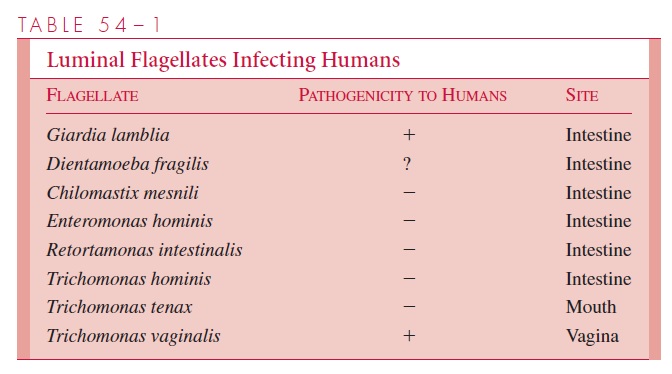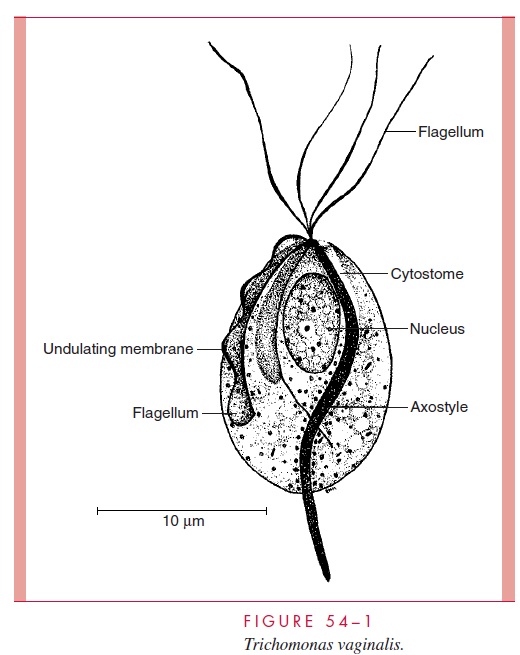Chapter: Medical Microbiology: An Introduction to Infectious Diseases: Flagellates
Trichomonas vaginalis - Parasitology
Trichomonas vaginalis
PARASITOLOGY
Three members of the genus Trichomonas parasitize humans (see Table 54 – 1), but only T. vaginalis is an established pathogen. The three species closely resemble one anothermorphologically, but confusion in identification is rare because of the specificity of their habitats.

The T. vaginalis trophozoite (Fig 54 – 1) is oval and typically measures 7 by 15μm. Organisms up to twice this size are occasionally recovered from asymptomatic patients and from cultures. In stained preparations, a single, elongated nucleus and a small cy-tostome are observed anteriorly. Five flagella arise nearby. Four immediately exit the cell. The fifth bends back and runs posteriorly along the outer edge of an abbreviated undulat-ing membrane. Lying along the base of this membrane is a cross-striated structure known as the costa. A conspicuous microtubule containing a supporting rod or axostyle bisects the trophozoite longitudinally and protrudes through its posterior end. It is thought that the pointed tip of this structure is useful for attachment, and it may be responsible for the tis-sue damage produced by the parasite. In unstained wet mounts, T. vaginalis is identified by its axostyle and jerky, nondirectional movements.

The organism can be grown on artificial media under anaerobic conditions at pH 5.5 to 6.0. Soluble nutrients are absorbed across the cell membrane. Particulate material, in-cluding bacteria, leukocytes, and occasional erythrocytes, may be ingested through any area of the cell surface. A variety of carbohydrates are fermented by pathways similar to those of anaerobic bacteria. Although it lacks a cyst form, the trophozoite can survive outside of the human host for 1 to 2 hours on moist surfaces. In urine, semen, and water,
Attempts to infect laboratory animals have met with limited success.
Related Topics